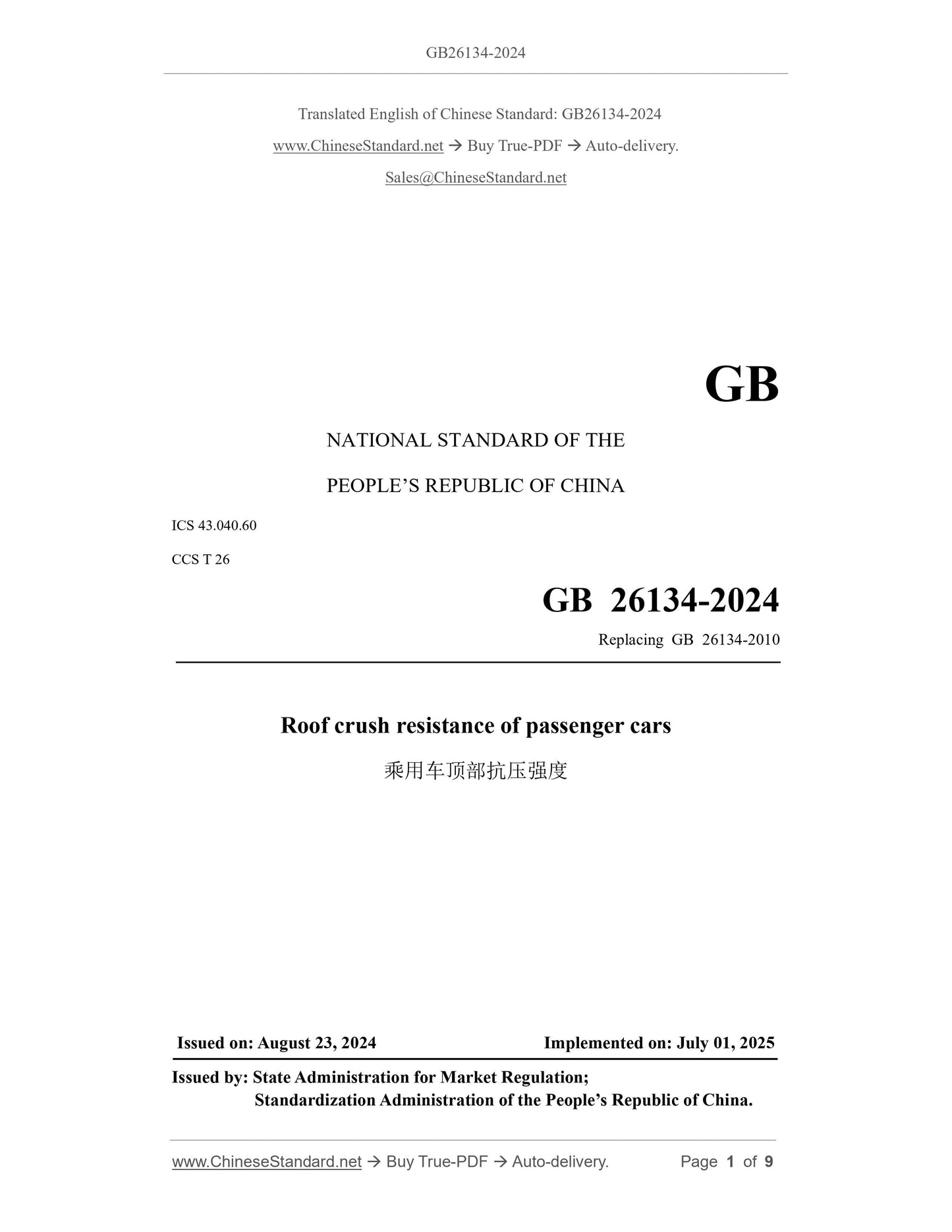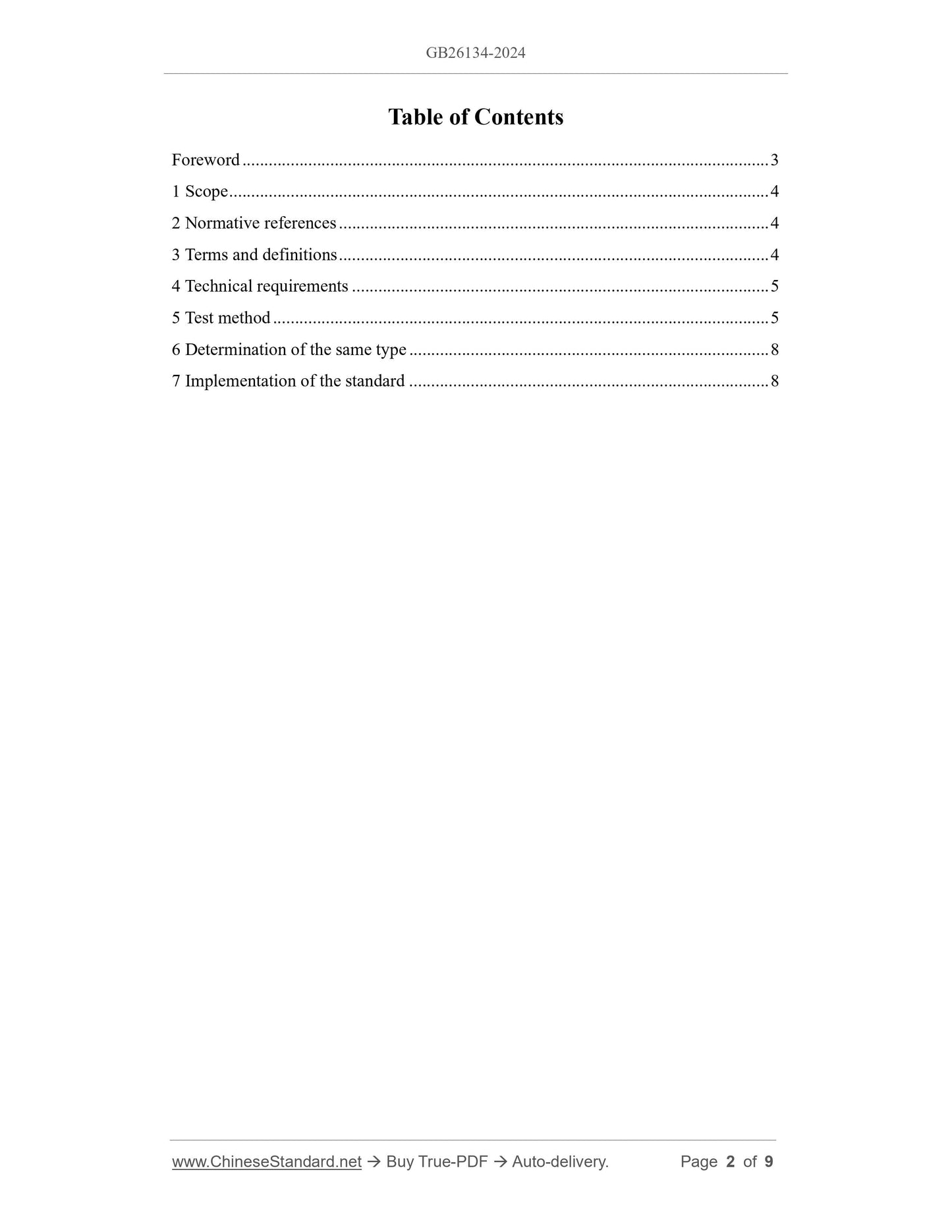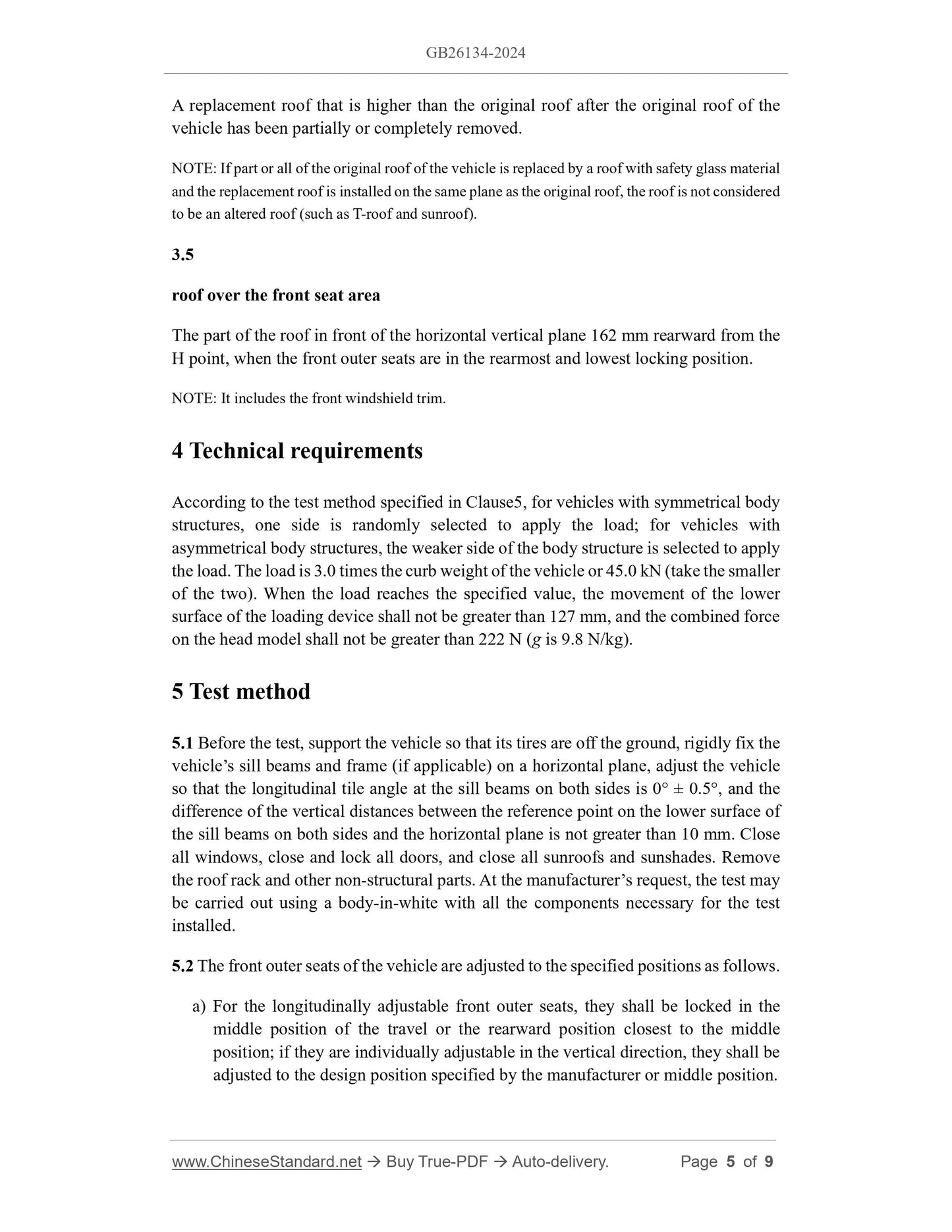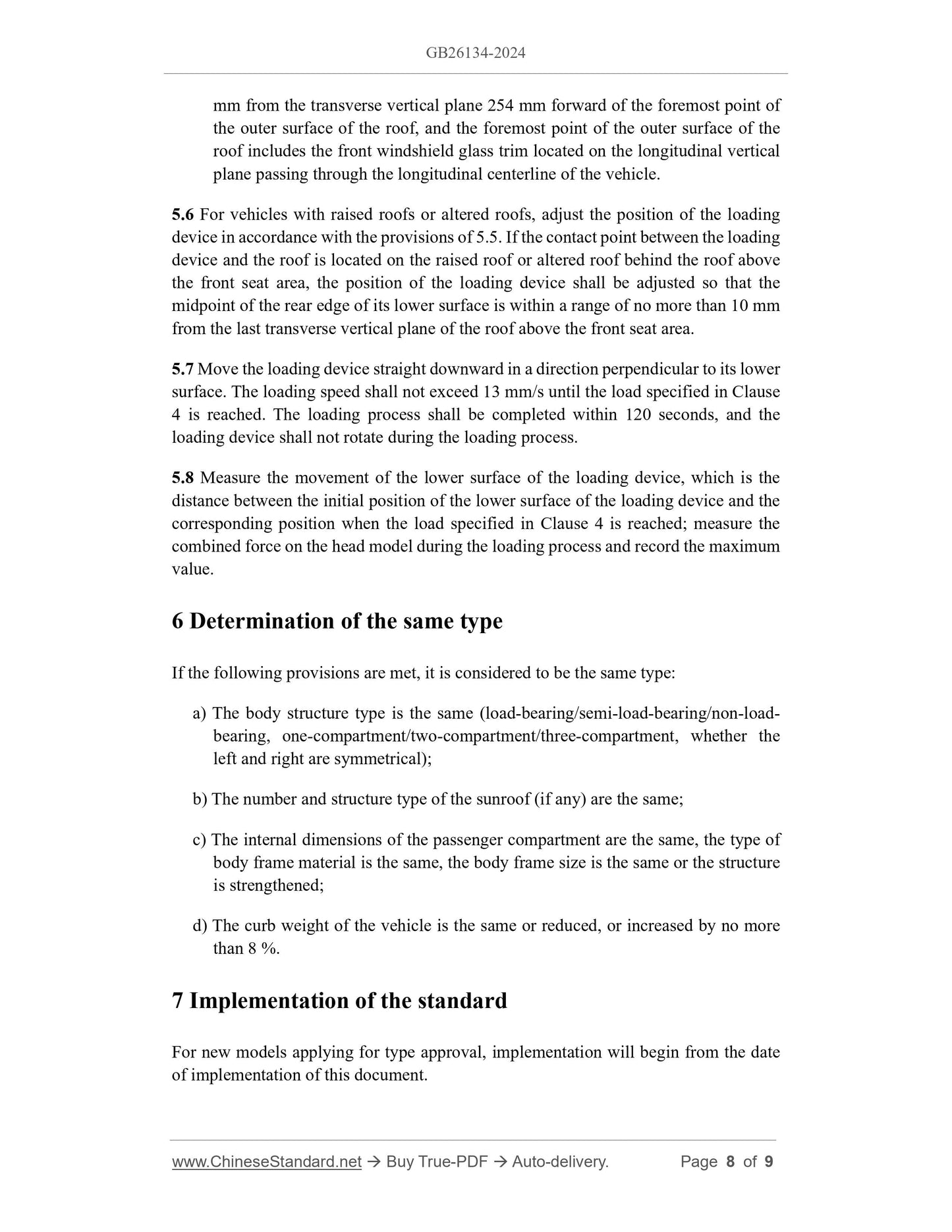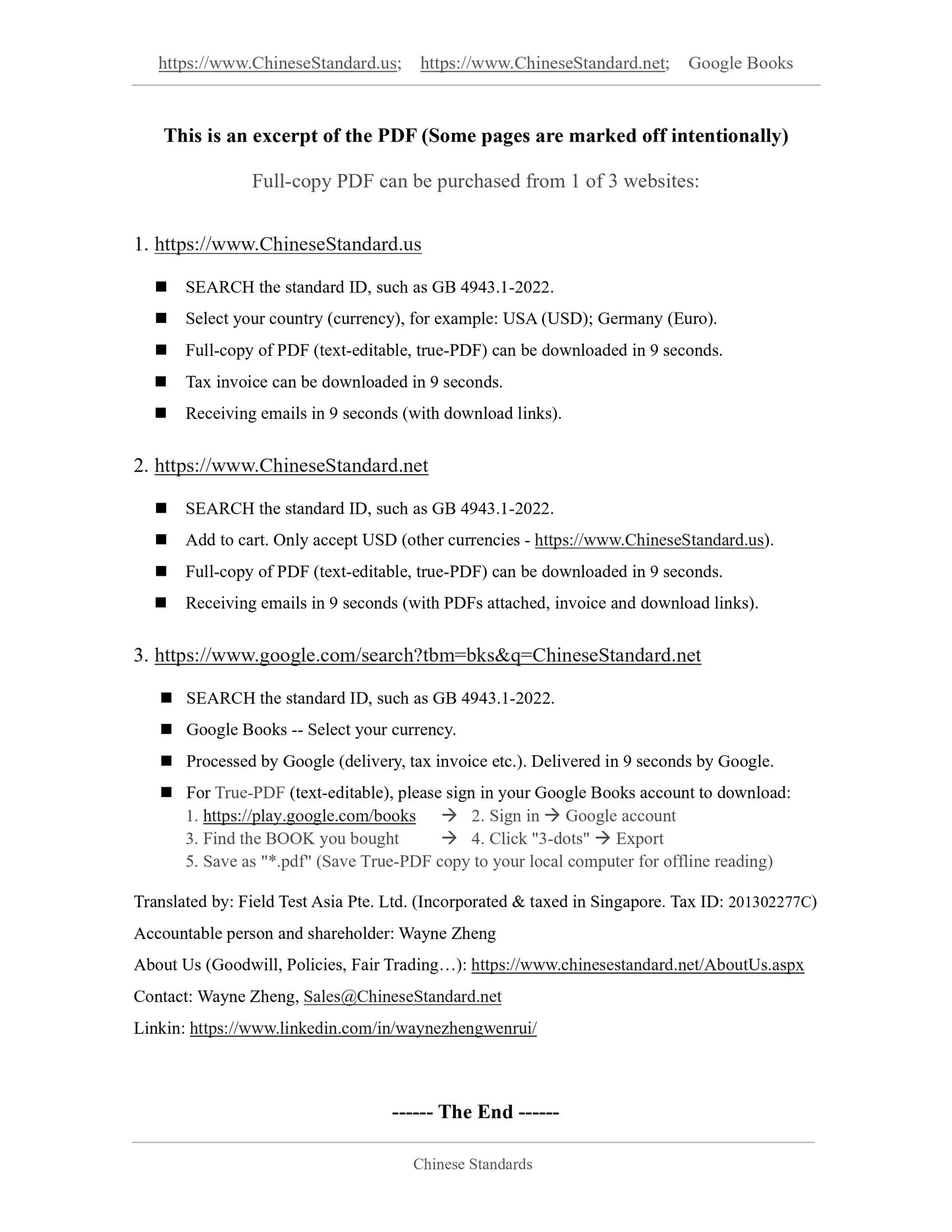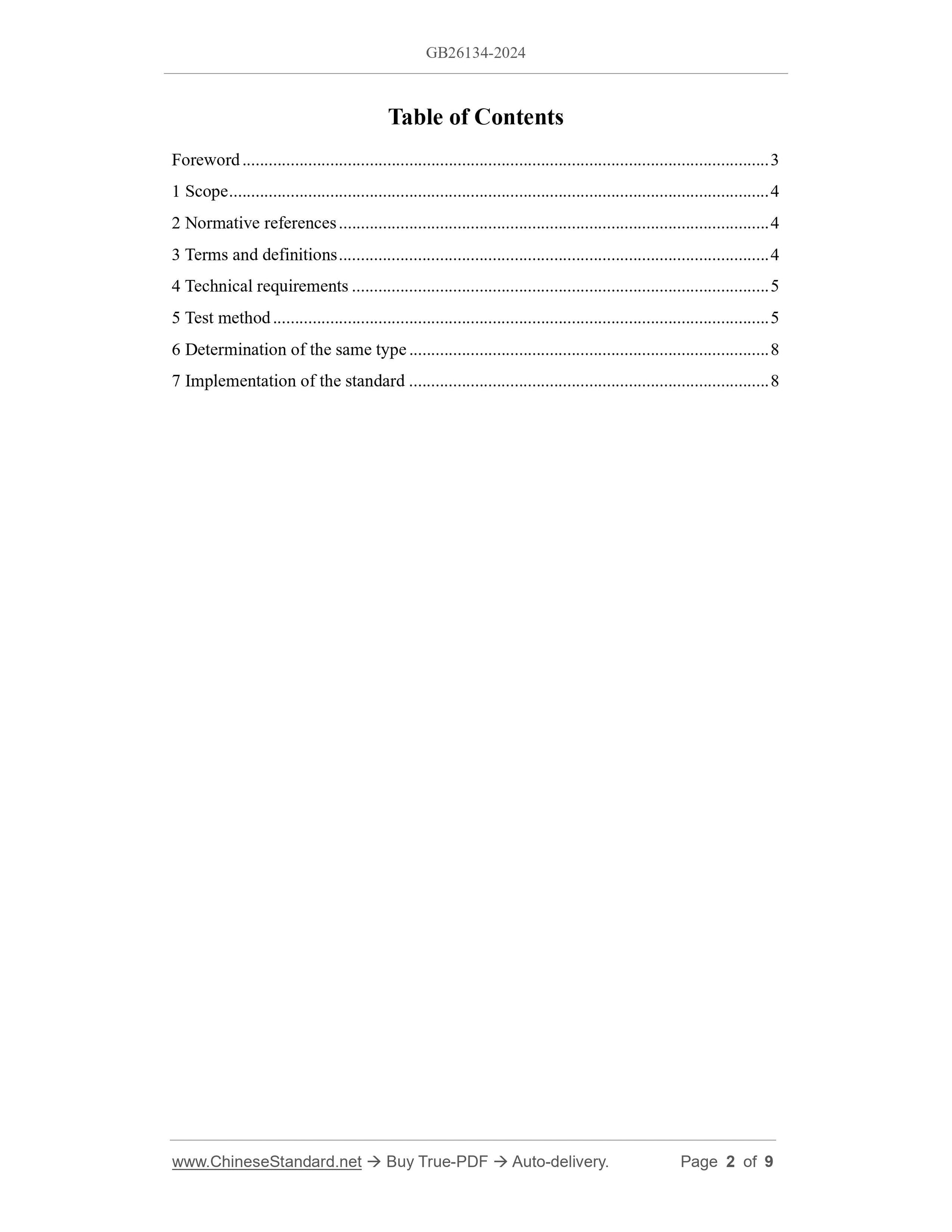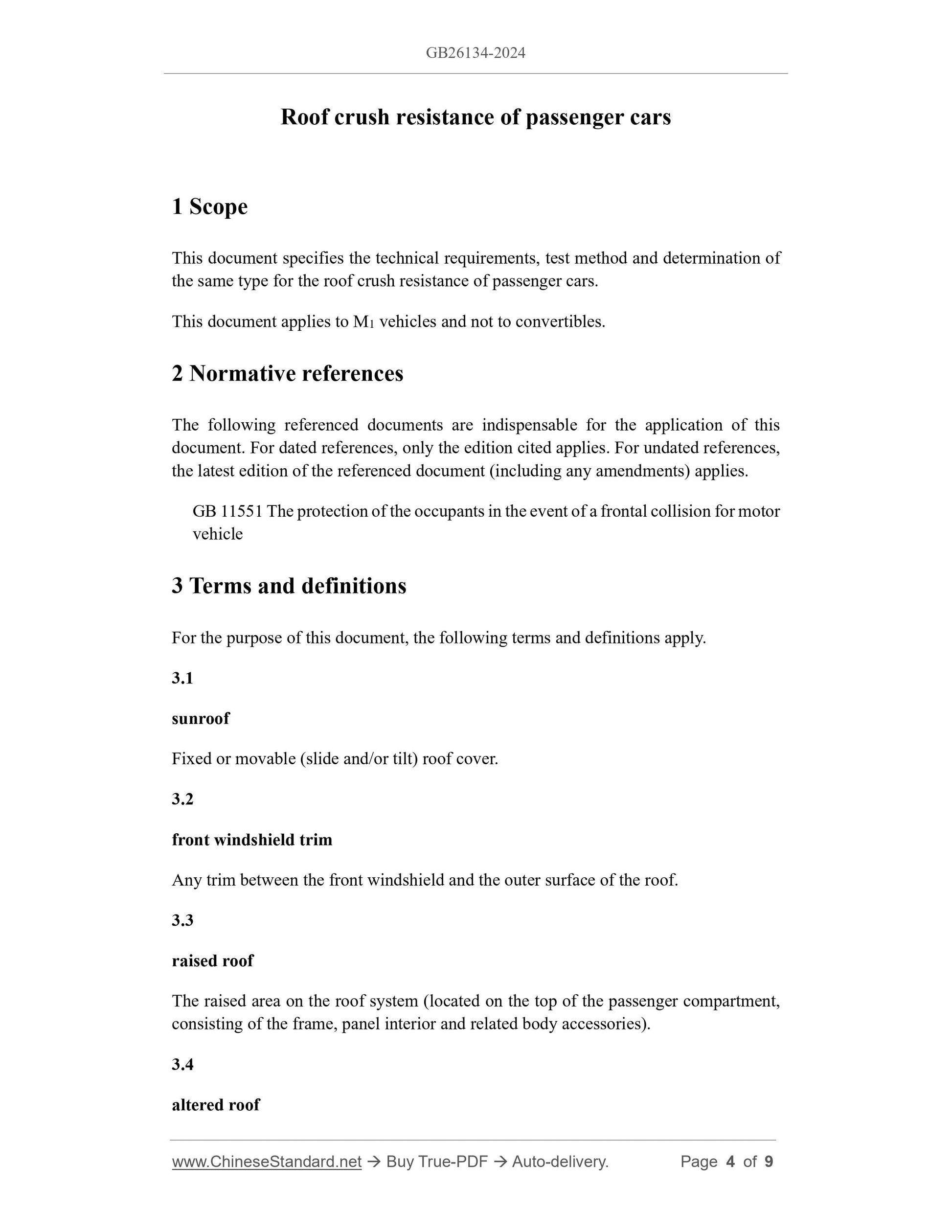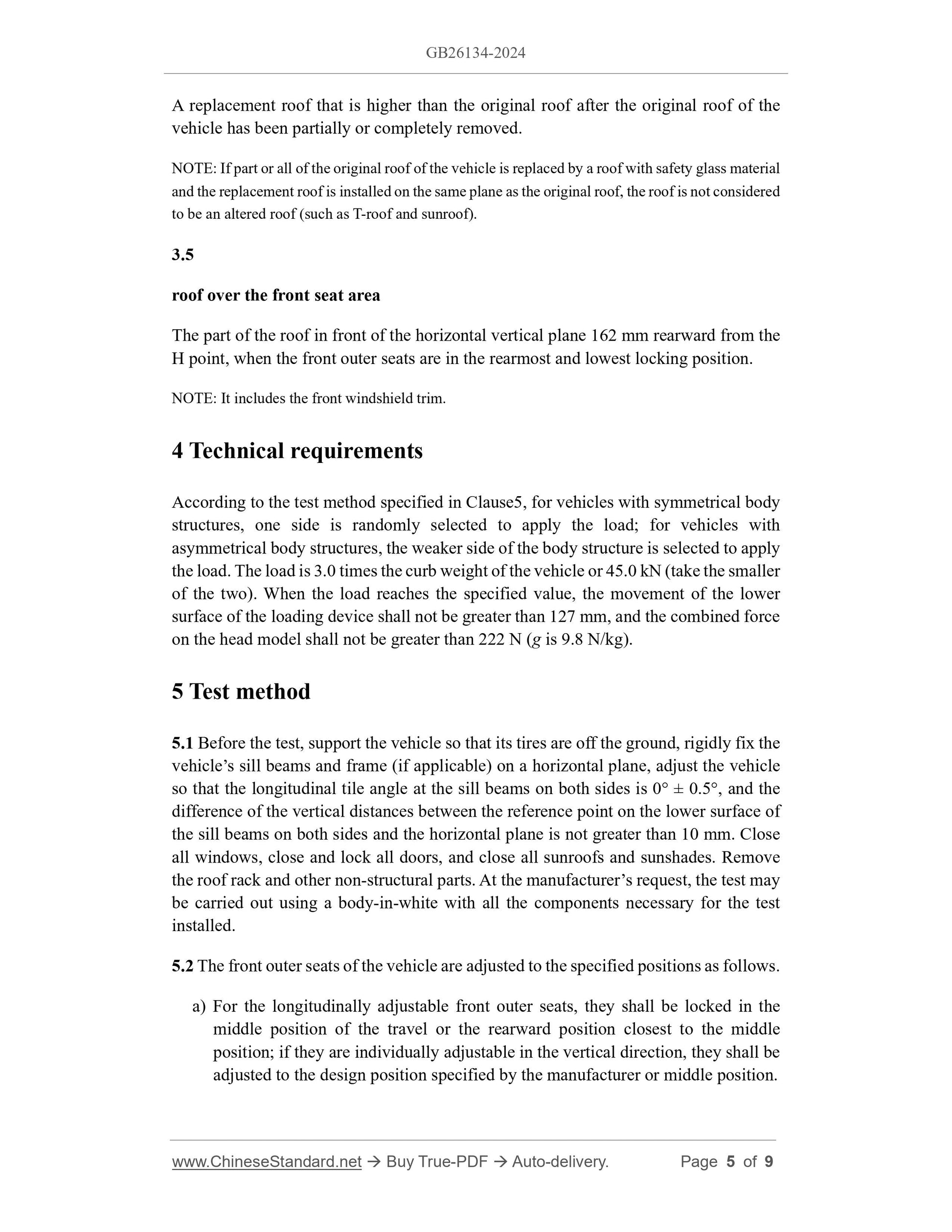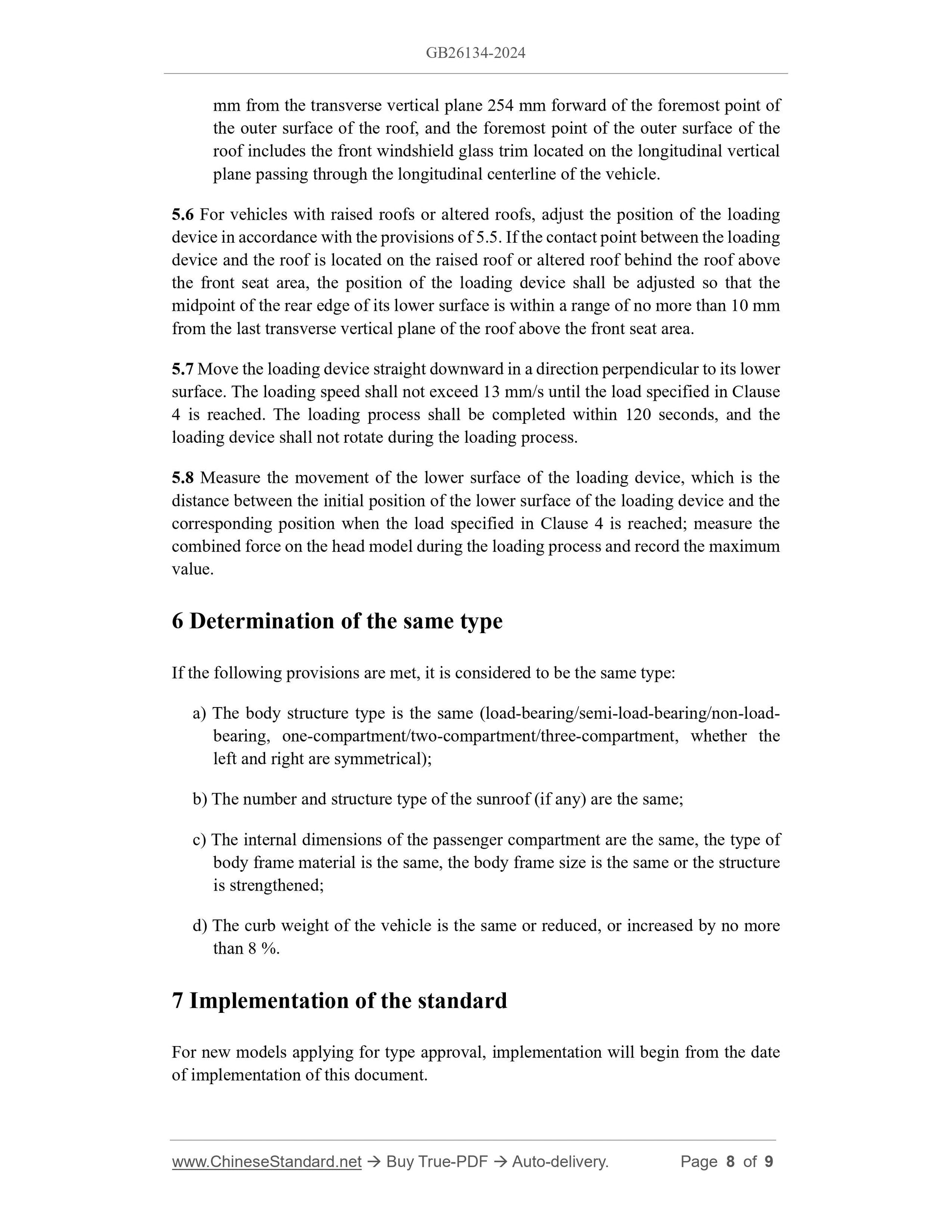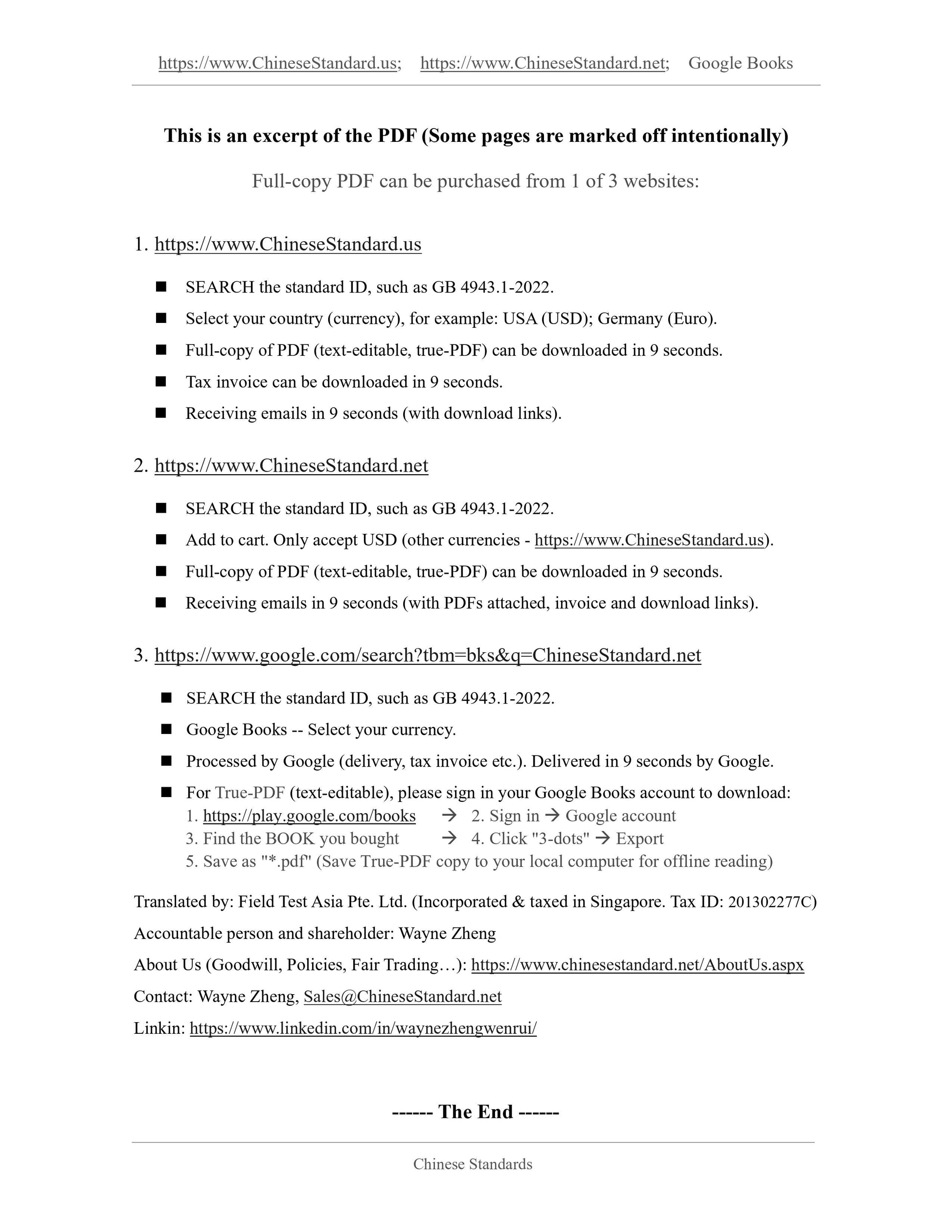1
/
of
6
www.ChineseStandard.us -- Field Test Asia Pte. Ltd.
GB 26134-2024 English PDF
GB 26134-2024 English PDF
Regular price
$215.00
Regular price
Sale price
$215.00
Unit price
/
per
Shipping calculated at checkout.
Couldn't load pickup availability
GB 26134-2024: Roof crush resistance of passenger cars
Delivery: 9 seconds. Download (and Email) true-PDF + Invoice.Get Quotation: Click GB 26134-2024 (Self-service in 1-minute)
Newer / historical versions: GB 26134-2024
Preview True-PDF
Scope
This document specifies the technical requirements, test method and determination ofthe same type for the roof crush resistance of passenger cars.
This document applies to M1 vehicles and not to convertibles.
Basic Data
| Standard ID | GB 26134-2024 (GB26134-2024) |
| Description (Translated English) | Roof crush resistance of passenger cars |
| Sector / Industry | National Standard |
| Classification of Chinese Standard | T26 |
| Classification of International Standard | 43.040.60 |
| Word Count Estimation | 10,155 |
| Date of Issue | 2024-08-23 |
| Date of Implementation | 2025-07-01 |
| Older Standard (superseded by this standard) | GB 26134-2010 |
| Issuing agency(ies) | State Administration for Market Regulation, China National Standardization Administration |
Share
